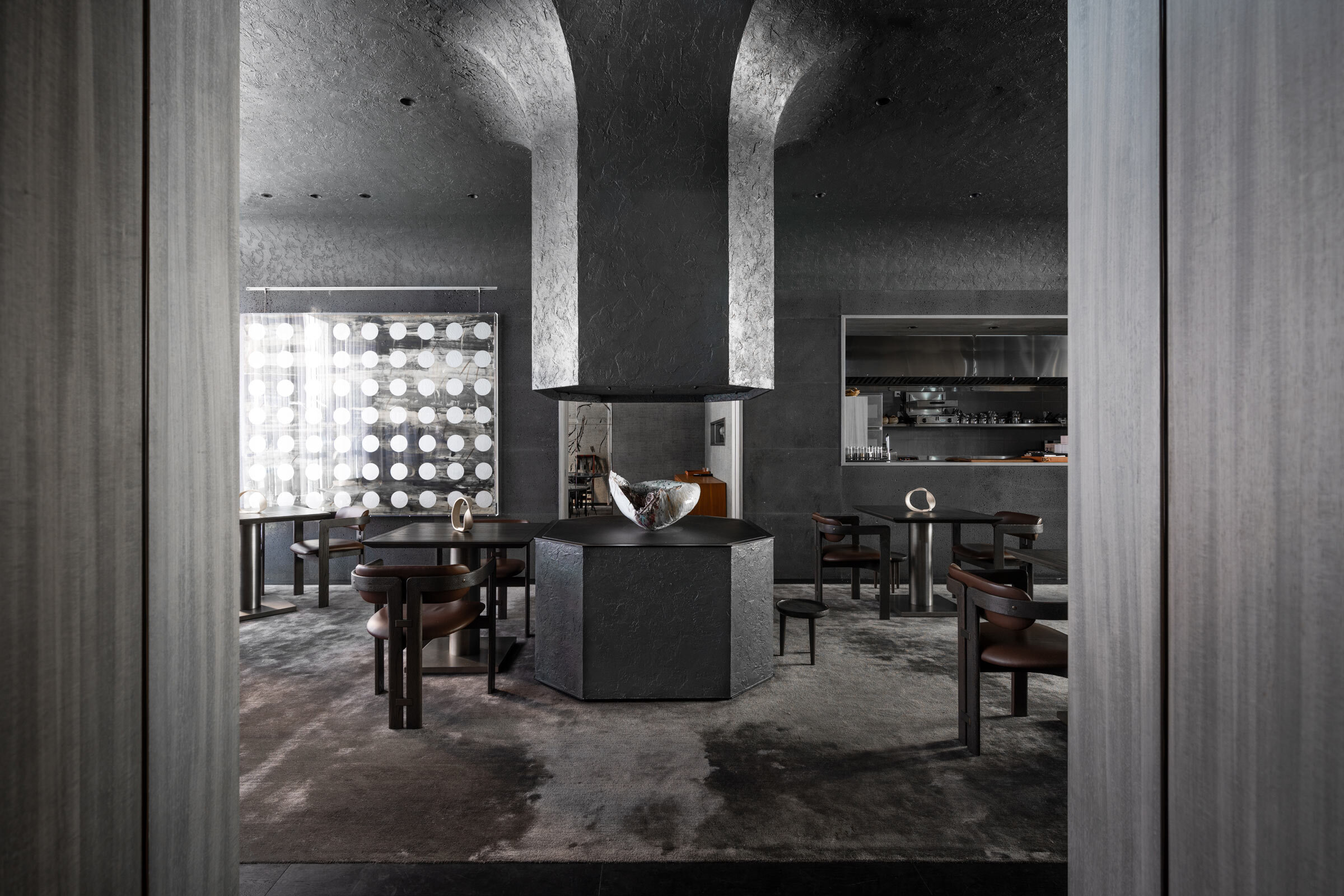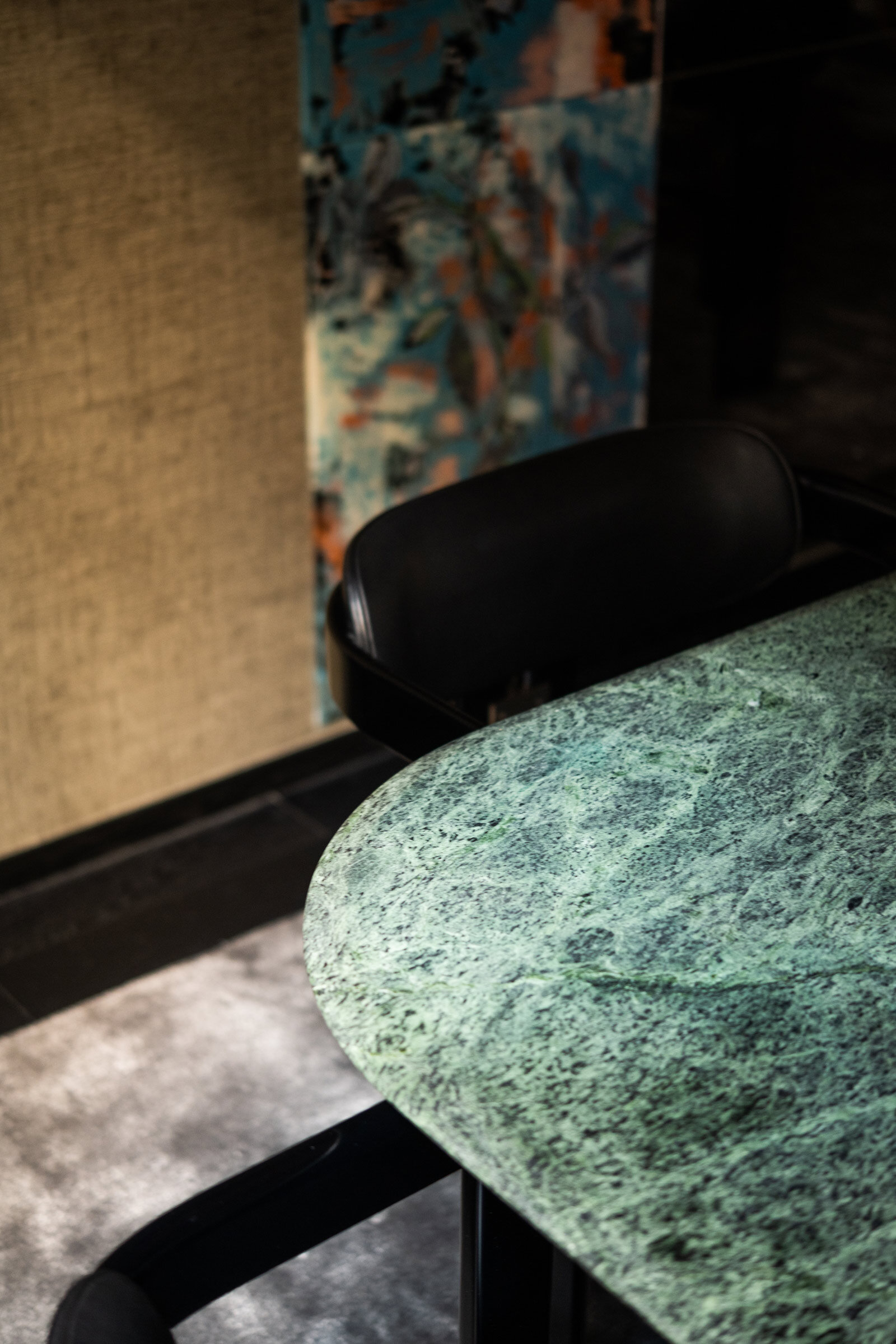Ando’s Interiors Reveal a Slice of Hong Kong
In new Japanese-Spanish restaurant Ando, Brewin Design Office abstracts Hong Kong city’s man-made textures and forms into a bold, brutalist interior
Urban centres can manifest glitz and glamour, glass and bright lights, dreams and facades. But they also embody decay, flux, concrete structures and shadows. In designing Ando, a new restaurant by Hong Kong’s JIA Group, also behind singular concepts such as Duddell’s and Louise, Robert Cheng looked to these paradoxes.
Located in Lan Kwai Fong, this 30-seater restaurant is led by Argentinian chef Agustin Balbi, who comes from a Spanish and Italian family. Balbi, who previously helmed Japanese restaurant HAKU, reflects these amalgamated roots in his cuisine with dishes like Ajo Blanco, a Spanish chilled almond soup, accented with ingredients like kombu and shrimp. Similarly, Cheng, founder of Singapore-based Brewin Design Office, eschewed distinct gastronomic themes, instead distilling this hybridity into a minimalist, textured space inspired by context.
‘For us, a foreign design team less familiar with Hong Kong, the Lan Kwai Fong and Central area epitomises the densest urban environment, layered and fully fabricated and man-made,’ says Cheng, who trained and worked as an architect before founding his multidisciplinary practice. Cheng says he imagined the restaurant as a ‘slice’ of the city, represented by materials like rough concrete, raw and bush-hammered stone, and patinated metal, with robust forms that appear cast and carved from these surfaces.
At the entrance, a weighty, abstracted centrepiece appears to pull apart at the middle to reveal a sculpture. Its fluid lines and floating effect temper its uncanny appearance and bulk. ‘It was designed as though the ceiling had flowed down to connect to a column,’ Cheng says of the piece that anchors the 140-square-metre space. On one side of the column is a long dining hall and on the other, a smaller zone for intimate gatherings. On both ends, curtains soften the space and cover windows that offer city vistas, perpetuating the restaurant’s link to Hong Kong’s urban fabric.
Running along the restaurant’s length, a barrel vault ceiling accentuates the space’s linearity. Cove lighting dramatises the rugged textures and evokes the feeling of being in a tunnel or monastic alcove. Dark, charcoal-coloured volcanic stone frames doorways and the long window that looks from the main hall into the kitchen. ‘The opening within the stone wall makes it seem like you’re looking through the rocks to see the activities in the kitchen,’ says Cheng.
On one of the walls, an artwork by Korean artist Kim Yong-Ik — from the private collection of JIA Group founder Yenn Wong’s husband Alan Lo — is an elegant counterpoint to the entrance sculpture. ‘The silver dots, which are a signature of Kim’s work, seem to relate to the lava stone walls, and the gold brushstrokes relate to the cove above when the light is on,’ Cheng explains.
In the private dining room, the jade tones in the custom-designed Verdi Alpi marble table complement Augusto Savini’s timber-framed Pamplona chairs. A Lasvit crystal pendant shines like a jewel against the darkened foil of grey walls and stucco ceiling, which references the chef’s focus on ingredients with its earthy, mocha hues. Each of these elements is in itself richly crafted, but together they reflect a thoughtfully composed narrative that makes the food inextricable from the place.
Text / Luo Jingmei
Images / Lit Ma












